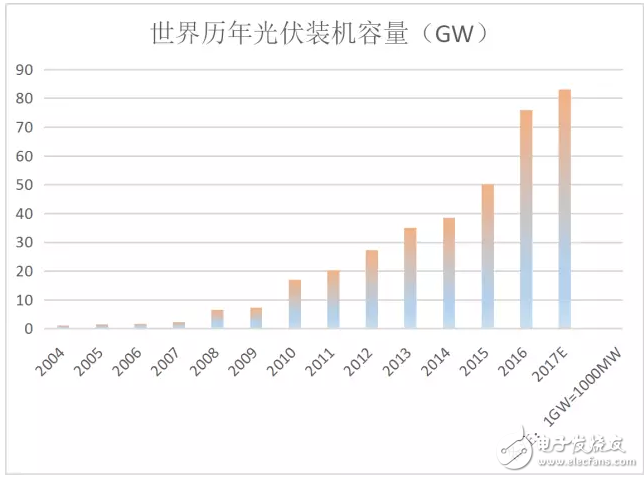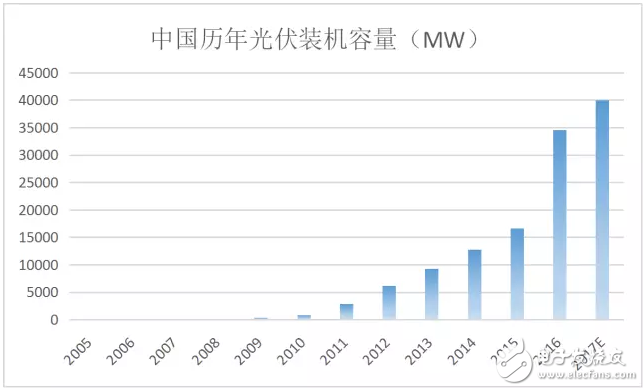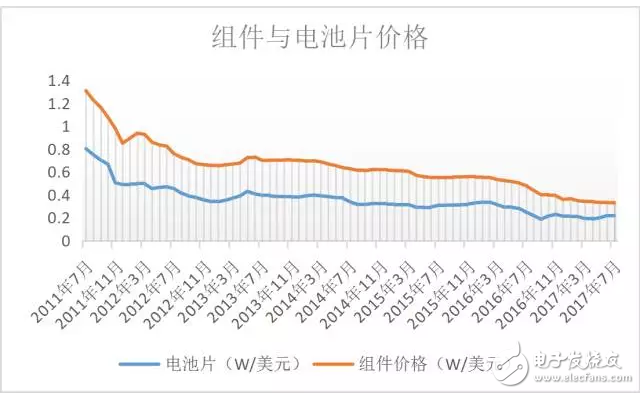This article will introduce the development history of photovoltaic industry, photovoltaic technology route and photovoltaic industry pattern. The purpose is to let the people who do not understand the photovoltaic industry have a preliminary understanding of the photovoltaic industry.
I. A brief review of the development of the photovoltaic industry
From the 1877 WGAdams and REDay studied the photovoltaic effect of selenium (Se) and made the first selenium solar cell, this year happens to be the 140th anniversary of the birth of crystalline silicon photovoltaic cells; although the word "photovoltaic" has been born for a long time, it can be counted as An old birthday star, but photovoltaic is still new for most people, because the real low-cost scale application of photovoltaic is a matter of recent years.
The real large-scale commercial application of photovoltaics began in Germany. In 2000, Germany enacted the Renewable Energy Act to ensure full access to photovoltaic power, high subsidies based on photovoltaic power plants (5 yuan / Kwh) and promised to be subsidized once the record was obtained. It will guarantee a 20-year subsidy.

In the early stage of PV development, Germany played an extremely important role. In 2012, for example, Germany's PV installed capacity was 3.83GW, accounting for 52.3% of the world's total installed capacity. Germany has played a vital role in the start and initial development of the photovoltaic industry. Of course, it is precisely because of the importance of Germany that it is too high, which led to the first serious blow to the photovoltaic industry after the withdrawal of the German subsidy policy in 2011. The photovoltaic industry greeted the first adult ceremony.
China's photovoltaic installed capacity ushered in explosive growth is after 2011; at that time, the European and American double-reverse policy caused China's photovoltaic industry to fall into the loss of the whole industry, the state to save the dilemma of the photovoltaic industry, to avoid China's PV in infancy The industry has been devastated, and the PV benchmarking tariff policy (1 yuan/kwh) has been formulated and the 25-year subsidy has been promised. As a result, China's PV installed capacity is experiencing explosive growth.

In 2008, China's PV installed capacity was only 145MW, and in 2016 China's PV installed capacity reached 34.54GW, which is 238 times that of 2008. In 2016, the global installed capacity of 76GW, China's installed capacity accounted for 45.4% of the world's total installed capacity; this year China's 630 rush to install more exciting, optimistic that the annual installed capacity will exceed 40GW, accounting for more than 50% of the world's total demand, China The demand for the world's photovoltaic industry is very important, and China's every move will be closely linked to the fate of the world's photovoltaic industry.
Looking back at China's PV installation data over the years, we know that the large-scale entry of photovoltaic products into thousands of households has become a visible and tangible product in life, which is the last five or six years. Therefore, "photovoltaic" is an old noun and a new thing. Along with the continuous growth of photovoltaic installation scale, the cost is declining. A series of latest technologies are continuously commercialized on photovoltaic products, and the cost is maintained at a rate of more than 10% per year. Reviewing the history of PV development is also a review. A history of the decline in the cost of photovoltaic products.

With the rapid development of wireless sensing technology, 433 MHz wireless communication devices have been more widely used in portable devices, vehicle-mounted terminals, intelligent locks and other fields [1]. As an important part of wireless communication equipment, antenna is a key component that affects the overall performance of the communication system [2].
Domestic and foreign scholars have been exploring the 433 MHz printed antenna with high gain and miniaturization for many years. However, there are two main trends in the design of 433 MHz printed antenna by previous scholars: one is to sacrifice size to ensure high gain, such as the structural scheme in literature [3]; The other is to sacrifice gain to ensure size miniaturization, such as the scheme in reference [4].
Taking into account the effective size and gain characteristics of the antenna is the difficulty in the design of 433 MHz miniaturized printed antenna. Based on the research experience of domestic and foreign scholars on 433 MHz printed antenna, a 433 MHz miniaturized spiral printed antenna is designed based on the 1/4 wavelength monopole antenna. The simulation results show that the antenna occupies only 20×35 mm2 and the effective gain is -4.14 dB.
433MHZ Rubber Antenna,433Mhz Patch antenna,433MHZ antenna with magnetic base,433MHZ Yagi Antenna
Yetnorson Antenna Co., Ltd. , https://www.xhlantenna.com